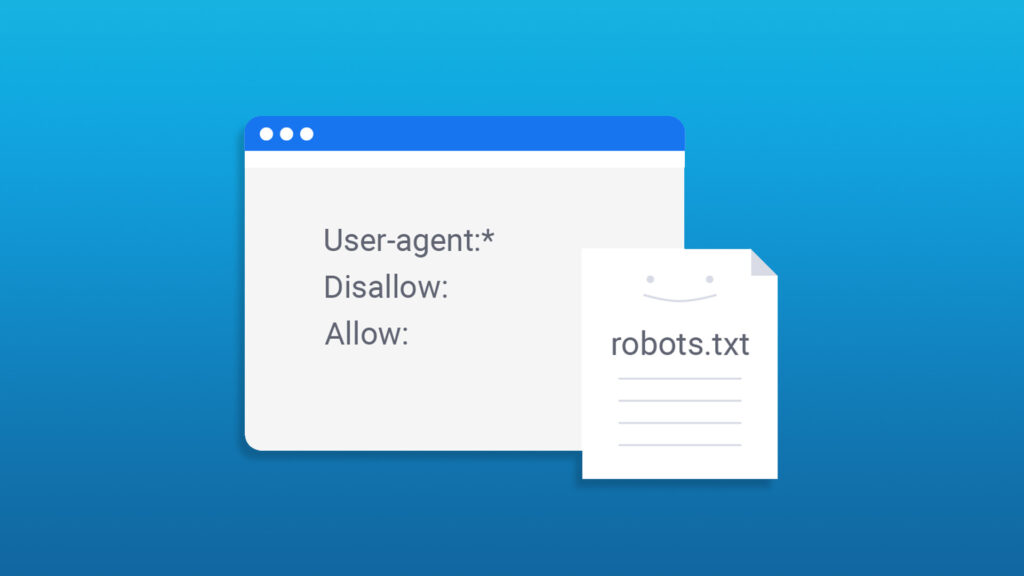Robots.txt is a simple text file that you can place on your server to control how bots access your pages. Robots.txt: txt SEO optimization incorporates rules for crawlers that indicate which pages should or should not be crawled. The file needs to be located in the root directory of your website. An example is if your website is referred to as “domain.com.” Robots.txt: for SEO, states that it should be live at domain.com/robots.txt.

The reasons why you require a robots.txt file
Robots.txt SEO optimization is not an obligatory part of your website, but a well-optimized one could benefit your website in various ways. The most important part is that it can help you with budget optimization. Search engine bots have limited resources that restrict the number of URLs they can crawl on a given website. So, if you are wasting your crawl budget on less important pages, there may not be enough for valuable ones.
With a robots.txt crawl delay, you can stop some pages from being crawled, such as low-quality ones. It is crucial because if you have numerous low-quality, indexable sites, it may have an impact on the entire website. This discourages search engine bots from crawling even high-quality pages. Robots.txt for SEO allows you to specify the location of your XML sitemap. A site map is a text file index that lists the URLs that you want the search engines to index.
Why is Robots.txt important?
Most websites do not need a robots.txt file. This is because Google can usually find and index all the important pages on your website. They do not automatically index pages that are not important or duplicate versions of other pages. These are the primary reasons why Robots.txt should be used for SEO purposes.
Block non-public pages
Sometimes there could be pages on your website that you do not want to be indexed. An example is that you may have a staging version of a page or a login page. These are the pages that do not need to exist. You also do not want random people stumbling upon them. In these cases, you may use Robots.txt to block the pages from search engine bots and crawlers.
Maximize the crawl budget
If you are having a tough time getting all your pages indexed, you could face a crawl budget problem. With Robots.txt, you may block unimportant pages. Googlebot is able to spend more of the budget for crawling on pages that are genuinely important.
Refrain from indexing your resources
Robots.txt, which stops pages from being indexed, may be overridden with meta directives just as easily. But meta directives do not work well for PDFs, images, or multimedia resources. This is where robots.txt plays an important role

Robots.txt syntax
Robots.txt consists of blocks of text. Every block starts with a user agent string and group directives for a specific bot.
User-agent
There are numerous crawlers that may want to access your website. Hence, you would want to set robots.txt crawl delays for specific boundaries based on their intentions. Here is when the user agent may come in handy.
User-agent is a required line in every group of directives. You may refer to them as “bots by their names and provide each one of them with specific instructions. A wildcard can be used, and instructions to all the bots at once can be given.
Directives
The guidelines you provide for search engine bots are known as directives. There may be one or more directions in each block of text. Every directive needs to start on a separate line. The directives include
- Disallow
- Allow
- Sitemap
- Crawl- delay
There is also an unofficial robots.txt noindex directive that is supposed to indicate that a page should not be indexed. But most search engines, like Google and Bing, do not support it.
Disallow
The pages that should not be crawled are listed in this directive. The prohibit directive does not prevent search engine bots from crawling any pages. You must specify a page’s path in reference to the root directory in order to restrict access to it.
Allow
You may use an allow directive to allow the crawling of a page in an otherwise disallowed directive.
Sitemap
The sitemap directive outlines the location of your sitemap. You may add it at the beginning or end of the file and define more than one sitemap. The sitemap is not required, but it is highly recommended. It is always a good idea to undertake robots.txt SEO optimization, enabling search engine bots to find it quicker.

Crawl-delay
In a short amount of time, search engine bots can crawl a large number of pages. A portion of your server’s resources is used by each crawl. If you have a big website with plenty of pages, then opening each page requires a lot of resources, and the server will not be able to handle all requests. This is where the crawl delay comes in handy, as it slows down the crawling process.
The best practices
Here are some of the best practices in the formulation of robots.txt for SEO purposes.
- There is no need to block CSS or JavaScript files using text. Bots may not read the content properly if they are not able to access the resources properly.
- Make sure that you add links to your sitemap to help all search engines find bots easily.
- Depending on the search engine’s interpretation of robots.txt, the syntax may differ. If you’re unsure, double check how a search engine bot interprets a particular request.
- When using wildcards, be careful. If you misuse them, you could block access to a whole section of your website by mistake.
- You should not be using TXT to block private content. If you are looking to secure your page, it is better to protect it with a password. The robots.txt nonindex file is publicly accessible, and you could disclose the location of your private content to dangerous chatbots.
To conclude, disallowing the crawlers from accessing it will not remove them from the search page results.
For more such blogs, Connect with GTECH.
Related Post
Publications, Insights & News from GTECH








